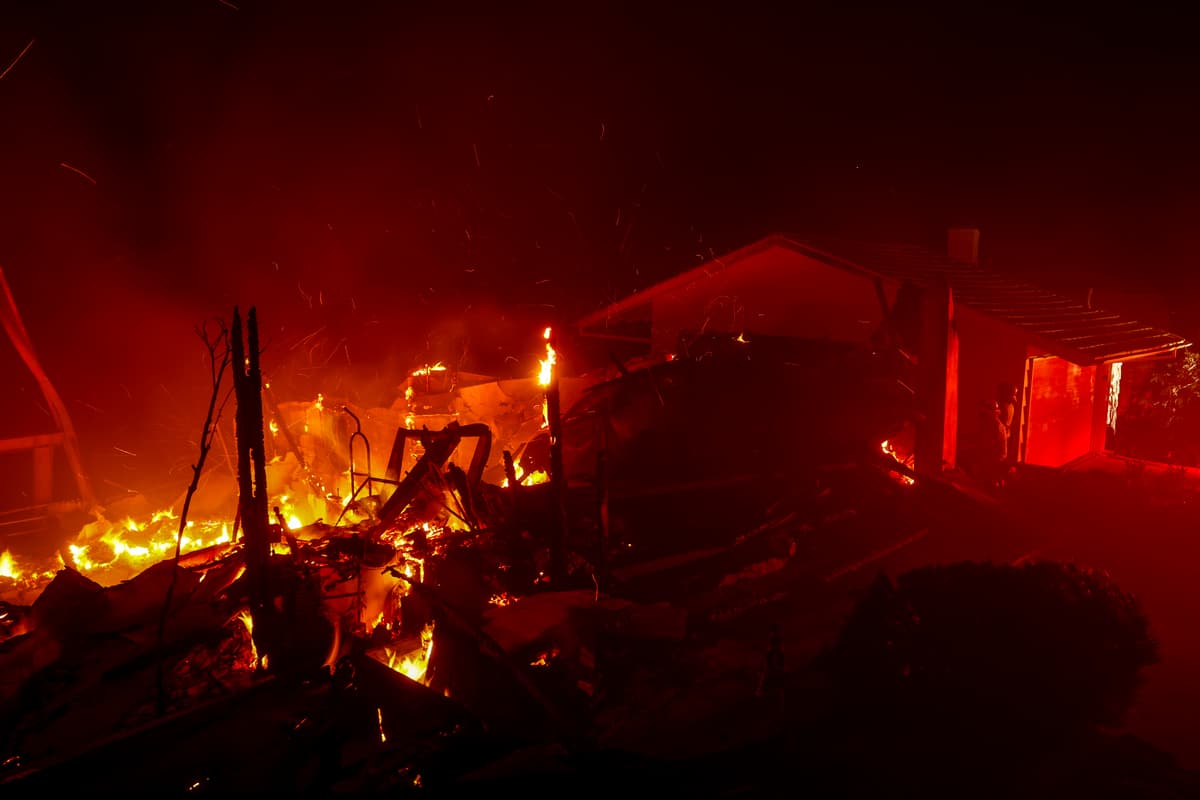Getty Villa, Intact Despite Palisades Fire’s Fury, Yet To Reopen
A new exhibit on ancient Thrace as well as the 40,000 antiquities of the museum’s permanent collection are all safe, but the larger Getty Center will likely reopen first.

PACIFIC PALISADES, California — The billowing smoke over the western reaches of the great city of Los Angeles may be gone, but as Senator Klobuchar reminded Americans on Monday, the fires here were fierce and will not be easily forgotten.
After Mel Gibson’s Pacific Palisades home burned to the ground in the firestorms estimated to have caused more than $250 billion in damage, the “Braveheart” actor suggested that Governor Newsom “buy less hair gel.” Nearby, staff at the famous Getty Villa activated emergency plans that spared the normally idyllic premises from the flames and saved priceless ancient treasures from destruction.
That is despite some initial news reports that seemed to indicate otherwise — many reporters, even in Southern California, have a thin understanding of the geography of this sylvan section of Los Angeles, which is uniquely shaped by the convergence of the Santa Monica Mountains with a broad curl of the Pacific coast.
A widely circulated photograph that showed a sign for the Getty Villa illuminated by flames spilling onto the Pacific Coast Highway on Tuesday, January 7, gave the false impression that that museum itself was on fire. That, fortunately, was not the case.
As J. Paul Getty Trust President and Chief Executive Katherine E. Fleming told the Los Angeles Times the day after the Palisades broke out, “We did get lucky in some ways, and people were rushing around. But there were also a lot of people who were really thoughtful about this over a long period of time, and I think that clearly paid off for us.”
The Getty Villa, modeled after the Villa dei Papiri at Herculaneum, is located on a verdant bluff overlooking the Pacific Ocean and Santa Monica Bay. It was built by oil tycoon J. Paul Getty in 1954 and is about 10 miles from the newer and larger Getty Center. With its $9.1 billion endowment, the Getty is the richest museum in America.
Both campuses were closed to the public soon after as the Palisades fire exploded last Tuesday, with flames coming to within six feet of the villa’s eastern walls restaurant. As of press time, the Getty Center was scheduled to remain closed through January 27 and the Getty Villa is closed until further notice.
Long considered a cultural touchstone in a city more celebrated for its entertainment industry than its high culture, the historic Getty Villa in particular is an American treasure that happens to be situated in an area of extraordinary beauty, as well as year-round fire risk. That it escaped from the devastating Palisades fire largely unscathed was greeted by an exhausted city with a certain degree of relief.
I was fortunate enough to volunteer at the museum for several months while in high school, working in the Ranch House where Mr. Getty once lived, behind the villa. It is one thing to see Greek and Roman antiquities inside museums of the great cities such as London and New York, but to view them in airy galleries that abut lushly landscaped gardens redolent of rosemary and marine air is unique.
The latest exhibition, which opened late last year, is called Ancient Thrace and the Classical World: Treasures from Bulgaria, Romania, and Greece. It includes over 200 objects, including skillfully crafted gold, silver, and bronze metalwork, pottery, inscriptions, stone reliefs, and other artworks reflecting Thrace and its connections to other ancient cultures in the Mediterranean and beyond.
Thrace is north of the Aegean Sea, in an area that now comprises Bulgaria and parts of Romania, Greece, and Turkey. With few written records preserved, much of what is known today about this culture depends mainly on brief accounts from ancient Greek and Roman authors as well as on surviving antiquities.
The ancestors of the Thracians, who migrated from the Eurasian Steppe to present-day Bulgaria, formed a distinctive culture by the Late Bronze Age (around 1500 BCE). Thracian tribes became known for their skills as horsemen and warriors, and interacted with Mycenaean Greeks and central Europeans, influences that can be traced in the production of metalwork.
There are some beautiful gold and silver banqueting vessels featured in the exhibition, including those discovered at Valchitran, Panagyurishte, and Rogozen in Bulgaria.
From the Bronze Age, Greeks traveled to Thrace for its rich deposits of gold, silver, and copper, establishing cities and trading posts with local Thracians, who also fought as mercenaries for the Achaemenid kings in the Persian Wars (492–449 BCE) against the Greeks.
“The exhibition is a rare opportunity for the Getty Villa to introduce American audiences to the world of ancient Thrace — a place and culture which deserves much greater attention,” says Sara E. Cole, associate curator of antiquities at the Getty Museum and co-curator of the exhibition. “The archaeological material on display, ranging from spectacular gold and silver to pottery and funerary monuments, allows us to present Thrace from a Thracian perspective, at times challenging the views expressed by ancient Greek and Roman authors.”
For more information, including updates on the Getty Villa’s reopening, visit getty.edu

